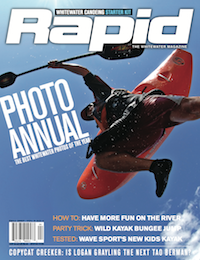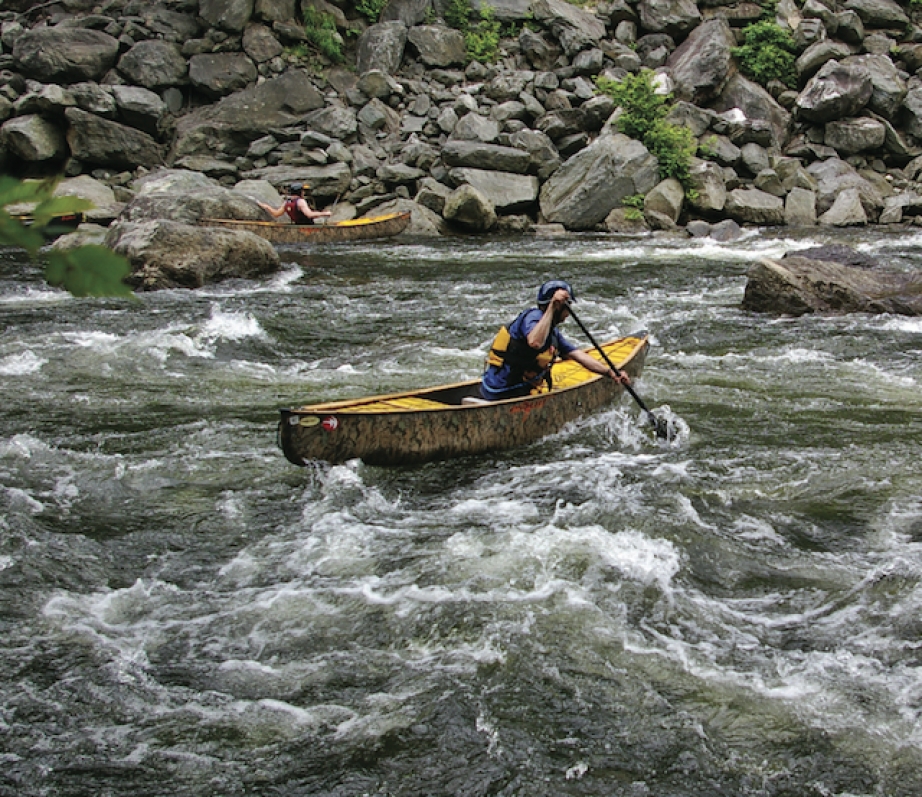Shallow water ferries can present an interesting water-reading challenge to canoeists. As the current flows over rocks or boulder gardens it is divided into bands of fast-and slow-moving water. Like lanes on the highway, these ribbons of water appear as parallel lines of traffic. Fortunately, these bands of current can be used to your advantage to assist in doing effortless ferries. The key is recognizing the currents and applying varying ferry angles that work with the water to move you quickly and easily across the river.
Identifying the bands of fast- and slow-moving water is actually quite easy. Reading water is simply observing the changes in colour and texture of the water as it flows over and around obstacles in the riverbed. In shallow water, look across the river for alternating bands of colour to show the different speeds of current. For example, colour changes from light–dark–light may indicate currents ranging from fast–slow–fast. Do the same for texture. Wavy–flat–wavy would also indicate current changing from fast–slow–fast.
The fun of shallow water ferries is selecting ferry angles that work with the currents to significantly reduce the number of paddle strokes needed to cross the river.
Why? Because it is always better to use the water to your advantage, and specifically in shallow water ferries, fewer strokes mean you are less likely to trip over your blade.
Here’s how: choose a ferry angle that points across the fast water and enter the current. This strategy helps to pull you quickly into the flow and jets you toward the adjacent band of slow water. Allow your angle to open until you are pointing across the boundary with the neighbouring band of slow water. Next, as you enter the slow current, allow the current to point the canoe upstream, which it will try to do, sort of like coming into an eddy. The momentum you carry from exiting the fast water will assist in your ferry up and across the slow current. As you approach the next band of fast water, open your angle to jet through the rapid flow. The changes in the speed of the current actually assist the changes of angle and direction of your canoe; it just takes some getting used to because we usually open our angle in slow water and close it when we enter fast moving water. On shallow water ferries we are doing the opposite.
This strategy, although untraditional, has a couple of advantages. First, it minimizes your exposure to fast current so you don’t have to waste energy duking it out in a losing battle against the river. Second, each transition between currents allows the boat angle to follow the current, practically eliminating correction strokes. Third, opening your angle promotes efficient glides by capturing momentum from fast water and carrying it into the slow currents. And finally, it gives you the opportunity to attain in the slow current to better position your boat for subsequent manoeuvres.
Shallow water ferries across bands of fast and slow moving water allow paddlers to tap into the power of the river to move across the river with very little effort. Effective water reading, choosing ferry angles that work with the water and, of course, practice make it easy.

This article first appeared in the Fall 2007 issue of Rapid Magazine.




